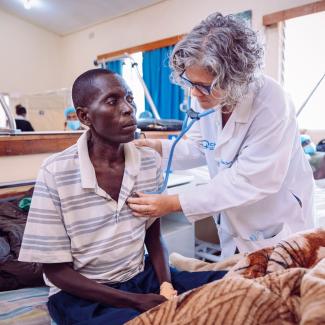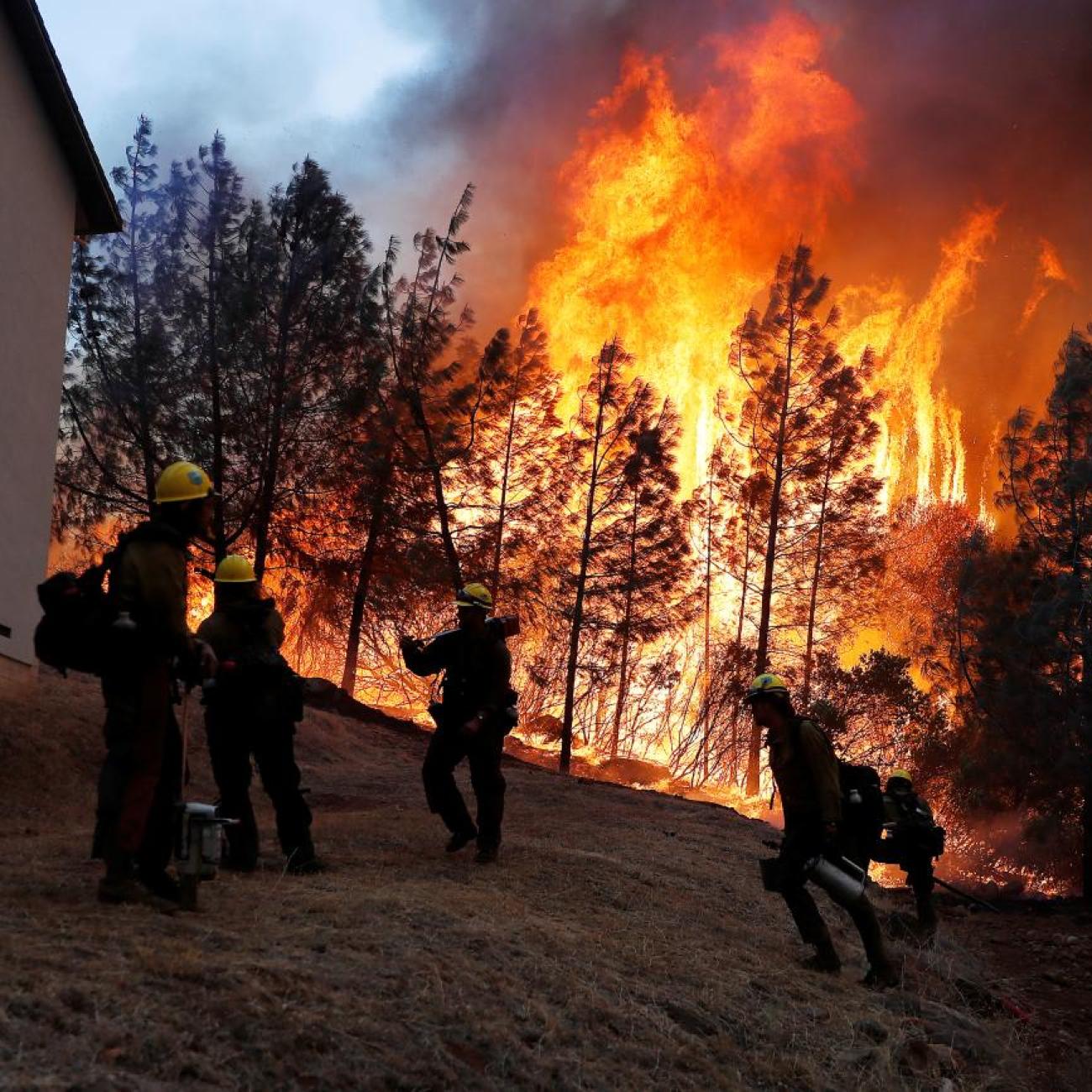Summer 2024 was the hottest summer on record.
New York City had more elevated and extreme heat days and advisories than ever before. Heat waves, and the increased frequency of hot days overall, kill more New Yorkers than any other type of extreme weather event, more than 350 people each year. Hotter, wetter air and soil can amplify the devastating power of storms like Hurricane Helene, increasing the risk of flood related damage, injury, and death.
Last week, the world's leaders converged on New York City to begin the annual UN General Assembly (UNGA). One of the most urgent concerns on their agenda was the global climate crisis and its impact on health. Alongside UNGA, this year's NYC Climate Week focused on climate change as the largest public health crisis of our time.
As those leaders seek a sustainable path forward for the globe, they should look locally, to the work being done right now in New York City and in other cities around the world, to mitigate the effects of climate change—whether extreme heat, flooding, deteriorating air quality, or vector-borne diseases—while also making urban areas safer, healthier places to live.
Cities, of course, are well positioned to lead given that they bear a substantial burden from a warming planet and extreme weather: Nearly 70% of the world's population is expected to live in a city by 2050, nearly 90% in the industrialized world.
Data Is Our Superpower
As New York City's health commissioner, I know that a strong public health system starts with unified data: in the case of extreme heat, the data needed to prevent heat-related deaths by identifying and prioritizing communities with the greatest burden of heat-related mortality.
Launched in 2015, the NYC Heat Vulnerability Index (HVI) informs neighborhood-level policies and programs that send lifesaving resources where they're most needed, ensuring that work is focused on neighborhoods with, for example, both the least tree cover, greenspace, and public transportation and the greatest structural inequities, such as income and wealth insecurity, which impedes energy and cooling access.
Cooling Equity
New York City has learned, not surprisingly, that heat deaths occur in spaces where there is no air conditioning (AC). That kind of risk is not evenly distributed across New York, and high HVI neighborhoods are most affected. In some historically under-resourced communities, access to residential air conditioning is as low as 76%, whereas the citywide average is 91%.
A strong public health system starts with unified data
It's also worth remembering that New Yorkers who have access to air conditioning at home may not be able to afford the electricity to run it. Nearly 3 in 10 New Yorkers (28%) experience energy insecurity—the inability to meet household energy needs—which is also associated with adverse health outcomes including respiratory, mental health, and cardiovascular conditions. The scale of this problem is global, as evidenced by the scores of older adults who died in Tokyo this summer—in part because they could not afford to run their air conditioners.
In response to these factors, our health team in New York City has directed resources to ensure that all residents have access to cool space. In 2020, our data analyses supported efforts to secure $70 million in summer utility subsidies for 440,000 low-income families.
That same year New York City implemented a free air conditioner distribution program in response to the threats of extreme heat and the COVID-19 emergency, which led to more people being able to safely stay home. The program distributed and installed ACs in the homes of nearly 73,000 older, low-income residents in both public and private housing.
Studies show that isolation, especially for older adults, is a risk factor for heat-related complications. So, starting in 2018, New York City piloted the Be A Buddy program, which pairs an older adult or isolated person with a younger community member who is responsible for checking on them and getting them to a cool environment during extreme heat days.
The Air We Breathe
World leaders at UNGA also discussed how climate crises never stay neatly within the borders of any one country. Last year, New York City saw some of the worst air quality ever recorded, similar to that of the most polluted cities—such as Delhi, Lagos, and others—as wildfire smoke drifted into the city from Canada in June 2023. City health officials knew which communities bore the greatest burden of air quality-related health impacts, however, thanks to the annual New York City Community Air Survey (NYCCAS), which tracks and evaluates how pollutants—from wildfires as well as traffic, buildings, and other sources—vary across neighborhoods.
The NYCCAS is the largest urban air quality monitoring program in the world, and the Environment and Health Data Portal provides both the annual NYCCAS data and real-time, hourly measurements of hazardous particulate matter (PM2.5) levels in the air at multiple monitoring sites across the city. This data helped us not only tailor our messaging and work with local outlets and community media to disseminate our alerts, but also assist in the distribution of masks to high priority neighborhoods and locations based on underlying risk and baseline air quality measures.
An Urban Plan for Climate-Fueled Flooding
Along with heat and air, flooding is a major, present threat to health from climate change in New York City, requiring both emergency and systemic response. In 2021, dozens of New Yorkers were killed, many of them in basement apartments, in a storm caused by the remnants of Hurricane Ida. The public's health is at risk before, during, and after flooding events, and an increase in extreme precipitation days and sea level rise are expected to contribute to more frequent flooding over wider areas.
As true of heat-related risks, flooding-related injury and death are preventable, especially when a health equity lens is applied to climate solutions. New York City conducted mortality reviews of major recent storms to understand individual risk factors during flooding events so that local leaders can collectively work to minimize risk and prevent harm and to target messaging and outreach to low-lying, flood-prone areas.
Shifting Patterns of Vector-Borne Disease
More frequent periods of sustained high temperatures, milder winters, and more rain and moisture extend the season when mosquitoes and ticks bite and spread disease. Currently, the mosquito-borne illness that presents the largest risk to New Yorkers is West Nile virus, which can cause severe illness, including death, and has been in the city since 1999.
Since West Nile first appeared, the New York City Health Department has built up one of the most robust monitoring programs in the world for West Nile and other vector-borne disease. This program entails extensive mosquito surveillance, bite and exposure prevention through public messaging and education, and a control program that includes source reduction, larval control, and spray operations conducted throughout the summer to prevent transmission and disease.
We work with thousands of health-care providers to educate them on the symptoms of West Nile and other vector-borne diseases. This effort is in addition to our community education and risk reduction programs for everyday New Yorkers to ensure that clinical surveillance is also beefed up alongside mosquito surveillance.
Local Leadership on Climate and Health: An Antidote to Climate Helplessness
Climate change can feel daunting, especially in the face of impacts that can feel to some years or decades away, mitigation efforts that are often out of our individual or community control, and that instead require global cooperation, diplomacy, and industrial action that is increasingly short supply in a rapidly changing and divided world.
New York City is doing more now than ever before to alleviate the health impacts of climate
New York City, though, is doing more now than ever before to alleviate the health impacts of climate. It is investing billions of dollars to implement hundreds of resiliency projects and sweeping policy changes with a multihazard and multilayered approach. It takes its responsibility seriously in the fight against climate change and its health impacts, and has made ambitious investments to address and adapt to the local health effects of this global health emergency.
The safety and well-being of New Yorkers and—because the climate crisis does not respect borders—that of people around the world, are depending on it. Our work and our relative successes locally show that we are not helpless against climate change’s impacts, and we can make a difference to prevent disease, suffering, and to save lives, and to make a difference today.
World leaders have come to and gone again from New York, as they do every September, seeking to address climate change and health through our multilateral systems. We need look no further than New York and other cities for how to make a difference right now.


